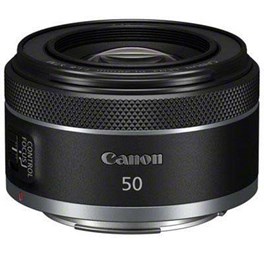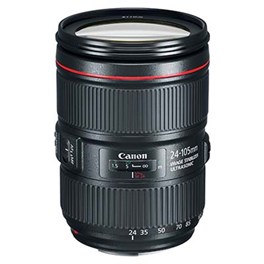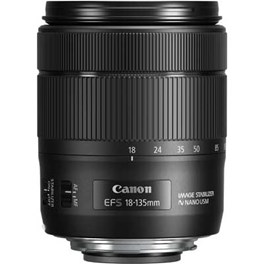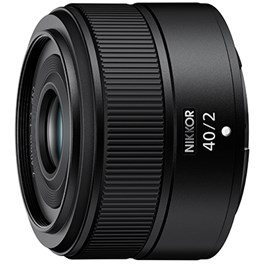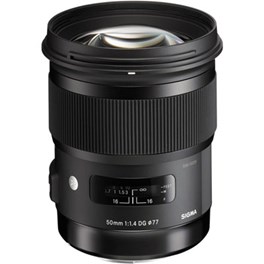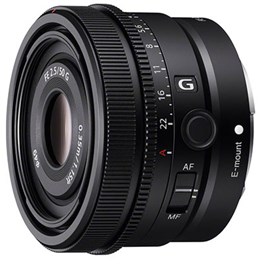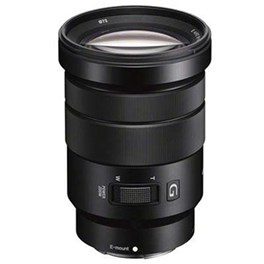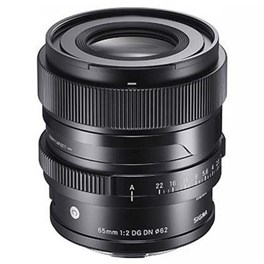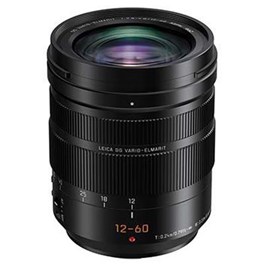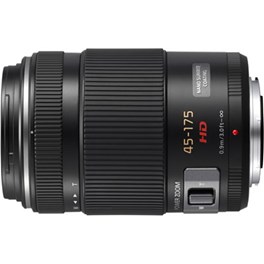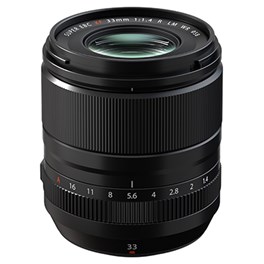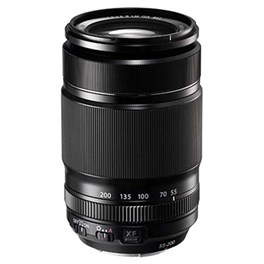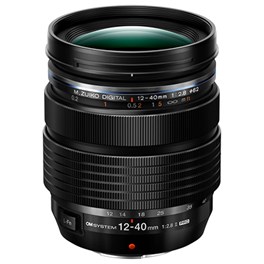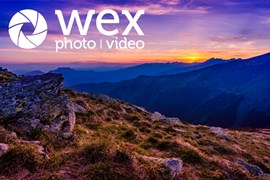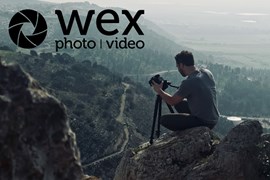
Welcome, street photographer – in this guide we’re helping you find the best lens for street photography, no matter what system you use. Street shooting is a fun, accessible and exciting discipline of photography, all about the purity of documenting a moment.
Street photography, for those who don’t know, is the art of recording everyday life in public places. It often consists of candid images of people in urban spaces (though doesn’t have to), showing off life in all its complex unexpectedness. Some of history’s most famous photographers, like Henri Cartier-Bresson, Saul Leiter and Vivian Maier, were street shooters first and foremost.
Almost any lens can be a good street lens if used correctly, so as you’d imagine, there’s plenty of choice. Below, we’ve listed some of the key specs to think about when selecting a street photography lens.
Prime or zoom? This is the big question you’ll want to answer before honing in on your street lens – do I want to shoot with a prime or a zoom? There’s no right or wrong answer here, as both have their advantages. Zoom lenses give you plenty of flexibility, and allow you to get precise with your framing without having to change position (which can attract attention).
Primes, meanwhile, tend to provide superior sharpness and optical quality, and also generally have larger maximum apertures, which is handy once light levels fall, and means you can use faster shutter speeds to freeze fleeting moments. Some photographers also feel that prime lenses improve your thinking as a shooter, encouraging you to work with your focal length rather than compensating with a zoom.
Size and build - Ideally, you want your street setup to be slim and unobtrusive, meaning it doesn’t attract too much attention – though with that said, a long telephoto can be useful for maintaining distance. Also, street shooting is mainly an outdoor pursuit, so a lens with a good level of weatherproofing is an asset.
Affordability - At heart, street shooting is one of the most accessible and fun disciplines in all of photography. All that’s really required is you, a camera and a place to shoot. So with that in mind, while there are plenty of premium professional lenses out there that would make for fantastic street-shooting options, we’ve kept this guide to lenses that are more broadly affordable for all users.
There are more features worth thinking about, but we’ll get into it as we go, so let’s dive into the best lenses for street photography!
Quick Navigation
Best Canon Lens for Street Photography
Canon kit is an excellent choice for street photography. Whether you’re using a good old-fashioned EOS DSLR and are enjoying the shooting immediacy of its optical viewfinder, or you’ve opted for an EOS R mirrorless camera for cutting-edge features and super-fast focusing, you’re absolutely spoilt for choice when it comes to lenses. Both systems are replete with lens options that are pitch-perfect for street – both zooms and primes. And, thanks to the ease of adapting EF lenses to EOS R cameras via the EF-EOS R adapters, mirrorless shooters have a lot of freedom to explore.
While Canon makes plenty of professional-grade lenses that are some of the sharpest, most capable on the market, we’ve picked out some options here that are a bit more accessible for the average user. However these lenses still offer top-notch quality, so there will be something here for you no matter where you are on your street photography journey.
Canon RF 50mm f1.8 STM Lens
The Canon RF 50mm F1.8 STM Lens delivers high-quality images in a compact, light prime lens body. Featuring redesigned optics and an STM motor, the lens is exceptionally quiet, making it great for both photography and videography. The lens offers a fast and wide f1/8 aperture for sharply focused subjects and stunning blurred background effects. The wide aperture and 50mm focal length are great for creating impactful images at lower ISO. Pair it with an EOS R-series camera for everyday photography.
£179.00 View
Pros:
- Portable and affordable
- Lovely bokeh quality
- Fast, silent focusing
Cons:
- Not as sharp as premium lenses
- Plasticky construction
A worthy mirrorless successor to one of the most popular prime lenses ever made, the Canon RF 50mm f1.8 STM Lens sits in the 50mm sweet spot beloved by many street photographers. Commonly referred to as a “nifty fifty”, a 50mm lens delivers a naturalistic perspective by virtue of the fact that it covers roughly the same field of view as a human eye. It’s not wide enough that you need to get super-close to a subject to isolate them, but nor is it so long that the field of view is restrictively narrow. It’s perfect for the kind of shooting where you never know what you might come up against next.
With a plastic construction, the Canon RF 50mm f1.8 STM Lens is a very lightweight lens that doesn’t add much heft at all to an EOS R camera. While there are premium versions of the lens offering greater sharpness (check out the Canon RF 50mm f1.2L USM Lens if you’re interested), this lens is the perfect inexpensive choice for the majority of street shooters.
Canon EF 24-105mm f4L IS II USM Lens
With a versatile zoom range of 24-105mm, the Canon EF 24-105mm f/4L IS II USM Lens is suitable for a wide variety of photographic applications, such as portraits, travel, and wildlife. Featuring 17 lens elements in 12 groups, 10 aperture diaphragm blades, and a dust- and moisture-resistant construction, the Canon 24-105mm f4L IS II USM lens boasts high-quality images and edge-to-edge sharpness.
£1,389.00 View
Pros:
- Weather-sealed build
- Quick, efficient focusing
- Constant f4 aperture
Cons:
- On the bulky side for street
- Loses sharpness at tele end
Many street shooters prize a zoom lens that does everything, one that covers all the focal lengths they’re likely to need. This means they can avoid potentially losing a shot by having to change lenses, or by simply not having the focal length that a shot requires. One such lens is the Canon EF 24-105mm f4L IS II USM, a powerful DSLR zoom that runs the gamut in terms of street images – it’s unlikely many street shooters will be habitually shooting much wider than 24mm, or much longer than 105mm.
This weather-sealed lens is an impressively complete package for street photography, with fast and quiet autofocus that helps you nail the shot time and again. It is definitely on the big side for a street lens, though if you’re using the kind of full-frame Canon DSLR the lens is designed for, this is likely something you’ve made your peace with.
Canon EF-S 18-135mm f3.5-5.6 IS Nano USM Lens
From landscapes to portraits to movies, this versatile Canon EF-S 18-135mm f3.5-5.6 IS USM lens is an all-round zoom well-suited for travel. Nano USM technology allows the lens to focus smoothly and quietly, making it well-suited for movies as well as stills. Canon's 4-stop Optical Image Stabiliser technology counteracts camera-shake for steady handheld results in low light, and features a panning mode for tracking moving subjects. For movies, there's also Dynamic Image Stabiliser, which counteracts extreme movements as well as camera-shake, allowing for smoother footage when shooting handheld.
£484.00 View
Pros:
- Broad, useful zoom range
- 4-stop stabilisation
- Reliably fast autofocus
Cons:
- No weatherproofing
- APS-C only
Another lens that earns points for versatility, the Canon EF-S 18-135mm f3.5-5.6 IS Nano USM Lens is designed for Canon’s range of APS-C DSLRs such as the EOS 90D. It provides an equivalent focal range of 29-216mm, so you get an enviable level of flexibility when it comes to your street shooting. It’s equipped with Canon’s Dynamic 4-stop Optical Image Stabiliser for smoother handheld shots, and Nano USM that provides super-speedy autofocus even with moving subjects. This system is not only fast, but also silent, meaning it’s great for staying unobtrusive on the street.
An all-around winner, this can quite comfortably be the only lens in your kit bag for most situations – except one. Something worth noting about this lens is that it does not offer weather resistance, so you’ll need to be careful about what conditions you take it out in.
Best Nikon Lens for Street Photography
We’ve picked out a couple of top-quality lenses for Nikon users looking to shoot street photographs. Of course, a Nikon user these days can be one of two things – someone rocking a Z-mount mirrorless camera and enjoying its superlative speeds, or someone with the heft and ruggedness of an F-mount DSLR. Never fear – all are welcome in the Wex tent, and we’ve included solid options for both systems.
Of course, it’s worth remembering that there are many more fantastic Nikon street photography lenses we could have chosen, and no matter which system you use, it’s worth a browse to get a feel for what you like. Also important to remember is that Nikon Z camera users can also make use of Nikon F DSLR lenses via the FTZ mount adapter, usually with full functionality of autofocus and stabilisation. So, don’t be afraid to browse!Nikon Z 40mm f2 Lens
Adding to Nikon’s growing Z-mount lens lineup is the Z 40mm f2 lens. This is an impressively compact and lightweight prime lens that offers a natural angle of view that’s perfect for engaging portraiture. With a range of intuitive and useful features, this lens can be used as an all-day lens that caters to countless photographic and video applications. It’s sharp, fast, quiet and set to impress.
£259.00 View
Pros:
- Excellent low-light focusing
- Very lightweight and portable
- Great subject/background separation
Cons:
- Only f2 max aperture
- Inevitably not as sharp as premium lenses
In terms of affordability and portability, it’s tough to beat this doughty little full-frame prime for Z-mount. The Nikon Z 40mm f2 Lens has a slightly wider field of view than the many nifty fifty primes we’ve included elsewhere on this list, so you’ll likely need to be comfortable getting a little closer to your subjects. However, your reward is a splendid lens with its own distinctive look, bolstered by its pleasing bokeh quality and top-notch ability to vividly separate subject and background for images that really pop.
One of the more affordable lenses in the Nikon Z stable, this lightweight lens is a perfect choice for always having in your kit bag, ready for an impromptu bit of street shooting. It pairs beautifully with full-frame Nikon Z cameras like the Nikon Z5, and its stepping motor delivers excellent autofocusing performance in all situations – even when the light gets low.
Sigma 50mm f1.4 DG HSM Art for Nikon F
The Sigma 50mm F1.4 DG HSM Art joins the highly regarded Sigma Art series of lenses as a favourite amongst photographers. We have found it is particularly popular for wedding, portraiture and gig photographers due to the focal range and wide maximum aperture. The F1.4 aperture is not only perfect for lower light conditions that you might find at weddings or gigs, but you have the ability to really play with your depth of field to create unique and interesting images.
£649.00 View
Pros:
- Excellent low-light performance
- f1.4 allows for ultra-shallow depth of field
- Multi-layer coatings reduce flare and ghosting
Cons:
- Cheaper alternatives available
- Quite bulky and weighty
It may be quite a hefty lens, but the Sigma 50mm f1.4 DG HSM Art delivers absolutely gorgeous image quality when mounted to a Nikon DSLR, and will deliver premium street photography results. Its sharpness and contrast levels are excellent, even when you bang it all the way open to f1.4, meaning you don’t have to worry about image quality suffering when you’re shooting in low light or when you’re experimenting with shallow depth of field.
Sigma’s “Art” lenses are all about creative expression, and the Sigma 50mm f1.4 DG HSM Art does just that. With fantastic bokeh quality and vivid colour rendition, it really is built to get the most out of Nikon’s superb F-mount DSLRs. You could shoot street for the rest of your life using this lens, and never feel like you’re wanting for anything.
Best Sony Lens for Street Photography
The Sony E-mount mirrorless system has been up and running for more than a decade now, meaning any Sony-using street photographer has a hell of a lot of lenses to choose from. Which ones you pick will depend on which Sony camera you’re using – specifically the sensor size. Those using full-frame Sony Alpha cameras like the A7 IV, A7R V or the smaller A7C will probably want to avail themselves of a full-frame lens (FE-mount) and take advantage of the premium optical quality on offer.
However, if you’re using one of Sony’s APS-C mirrorless cameras such as the A6400 or older A6000, or even one of the vlogging-oriented ZV cameras, then the dedicated APS-C E-mount lenses will likely be a better choice. While many of the full-frame lenses will still work on the crop-sensor cameras, it can cause quite an imbalanced, front-heavy setup. As such, we’ve made a pick for users of both types of Sony mirrorless camera.
Sony FE 50mm f2.5 G Lens
The Sony FE 50mm f2.5 G Lens has been released with both the photographer and videographer in mind. It features an intricately constructed optical design, incorporating two aspherical elements and one ED (Extra-low Dispersion) element for edge-to-edge sharpness and clarity. For dynamic portraiture and imaginative still-images, this lens produces a stunning bokeh effect (or background defocus). Lightning-fast, accurate AF is consistently achieved via the dual double linear motors, along with precise tracking - even within a busy frame. Due to its compact size, lightweight build, and quiet AF - this 50mm f2.5 is an ideal companion for urban adventurers. Further to this, the intricate internal focusing system ensures that the angle of view remains stable during focusing and focus breathing is minimised. This lens is ideally suited to freelance filmmakers, content creators, and aspiring cinematographers - reliably delivering smooth, fast and continuous AF performance for video shooting.
£629.00 View
Pros:
- Fast autofocus and AF tracking
- Weather sealed
- Excellent sharpness, even wide open
Cons:
- Narrower max aperture than other 50mm lenses
- Small buttons can be fiddly
This lens may seem unusual at first glance – why is its aperture narrower than similar 50mm lenses, which tend to offer maximum apertures around the f1.8 or f1.4 mark? However, once you dig into the specs of the Sony FE 50mm f2.5 G Lens it starts to make sense – there was no other way to deliver a lens this sharp and this compact. Even when shooting wide open, the Sony FE 50mm f2.5 G delivers tack-sharp images, and its autofocusing is absolutely first rate thanks to the dual linear AF motors.
Even with a narrower aperture, the bokeh quality delivered by the lens is excellent, and it makes for a truly fun and expressive lens to shoot with. There’s built-in stabilisation technology to help with shooting handheld at slower shutter speeds, and the optical construction ensures edge-to-edge sharpness.
Sony E 18-105mm f4 G OSS Lens
The Sony E18-105mm f/4 G OSS Lens is ideal for general purpose, everyday shooting, covering a 5.8x zoom range from 18-105mm (27-157.5mm full-frame equivalent). Its electrically-driven zoom ensures smooth, silent operation for capturing both stills and movies and built-in Optical SteadyShot reduces camera shake during handheld shooting in low-light conditions. G lenses are Sony's professional quality lenses offering excellent image and build quality.
£419.00 View
Pros:
- Very good image quality throughout zoom
- Optimised for APS-C cameras
- Constant f4 aperture
Cons:
- Some corner softness
- Some correctable chromatic aberration
This is the first lens for E-mount APS-C cameras to receive Sony’s “G” designation, awarded to lenses that pass stringent standards of optical quality and sharpness. So, as you might imagine, the Sony E 18-105mm f4 G OSS is a very good lens indeed. It’s sharp as a tack throughout its zoom range, exhibiting only a little corner softness at the extreme ends, and not enough to worry about.
It feels nicely optimised for the APS-C E-mount range, and balanced well with the cameras. Its equivalent focal length of 27-157mm feels nice and street-friendly, with probably a little more play then you need at the tele end, but hey, who ever complained about too much range? We also like the fact that Sony committed to including a constant f4 aperture, making the whole lens feel much more useable than it would if it dropped off to f5.6 or beyond at the narrow end.
Best Panasonic Lens for Street Photography
Panasonic offers a gamut of spectacular cameras for street shooting – and the lenses to go with them. Whether you opt for the speed and portability of the Micro Four Thirds Lumix G cameras, or the standout image quality of the full-frame Lumix S series, there are options aplenty for street photography – and in both cases, you don’t have to restrict yourself to just lenses with the “Panasonic” name on.
In the case of the full-frame Lumix S cameras, the lens mount in question is the L-mount, which was developed in conjunction with Sigma and Leica, and as such offers a suite of high-quality lenses. In the Lumix G series, meanwhile, you have the entire Micro Four Thirds lens ecosystem at your disposal, with optics created by Panasonic, Olympus and other manufacturers spanning back more than a decade. They’re both immensely exciting systems for street photographers – here’s the best of what they have to offer.
Sigma 65mm f2 DG DN I C Lens for L-Mount
The Sigma 65mm f2 DG DN I C comes as the missing link between standard and classic portrait lenses. This beautifully designed, short-telephoto focal length lens offers impressively high-performance optics encased in a premium, professional and stylish chassis. The precision-cut, all-metal barrel houses an intricate lens structure that enables you to capture highly detailed and clarity-rich images. The lens make-up is comprised of 12 glass elements in 9 groups, which includes 1 SLD element and 2 aspherical elements. These elements have been treated with Sigma's advanced super multi-layer coatings which reduce ghosting and flare, whilst significantly improving overal image quality. The lens is reminiscent of Sigma's cine lens lineup and has the very same preminimum feel that will compliment your camera body.
£649.00 View
Pros:
- Creates images full of character
- Unique focal length
- Solid all-metal build with aperture ring
Cons:
- Unusual focal length may not be for everyone
- Some may want wider max aperture
Sigma’s “I” series of lenses stand out from the pack. Coming in slightly unusual focal lengths, they place an emphasis on individuality and character, and as such are ideal for street photography, where expression and creativity are often prized over technical perfection. The Sigma 65mm f2 DG DN I C Lens for L-mount is a fantastic choice for Panasonic Lumix S full-frame cameras – remember the L-mount was developed as an alliance between Panasonic, Sigma and Leica.
At 65mm, this lens is longer than a standard nifty-fifty, but not quite as narrow as an 85mm portrait lens, and provides an interestingly different field of view for street shooting. While the aperture tops out at f2 – a little narrow for a prime, but a measure that keeps the size and cost of the lens down – the bokeh quality is excellent thanks to the nine-bladed aperture.
Panasonic 12-60mm f2.8-4.0 LEICA DG VARIO-ELMARIT POWER O.I.S. Lens
The Panasonic 12-60mm f2.8-4.0 Leica DG Vario-Elmarit Power O.I.S. Lens with Micro Four Thirds fit is a versatile zoom capable of smooth, silent operation for both stills and video. Suitable for a variety of shooting situations, its wide f2.8-4.0 aperture provides a beautiful defocus effect, whilst the POWER Optical Image Stabiliser compensates for blurring, allowing for handheld shooting even in dimly lit environments. The lens also features a compact, rugged, splash- and dust-proof design.
£799.00 View
Pros:
- Lightweight, quiet and unobtrusive
- Rugged and weatherproof
- Very effective stabilisation
Cons:
- Some softness at widest apertures
Versatile and super-sharp, this Micro Four Thirds lens from Panasonic is a great choice for travel shooters in stills, video or both. The equivalent focal range in 35mm terms is 24-120mm, and when mounted on a Panasonic camera, the lens can use its own stabilisation in tandem with the camera’s to provide a huge amount of effective stabilisation, expanding options in low light. It’s got a rugged design that’s protected against dust, splashes and even freezing temperatures, so if you’re planning on venturing into challenging conditions, you’re covered.
Thanks to its silent operation, the lens is great for unobtrusive shooting at the side of the street – it weighs just 320g and its build is nice and compact. Autofocus is quick and quiet thanks to the inner focus drive system, and the nine rounded diaphragm blades give a pleasing shape to bokeh in images shot at wider apertures.Panasonic 45-175mm f4.0-5.6 LUMIX G X Vario Micro Four Thirds Lens
The Panasonic Lumix G VARIO 45-175mm f/4.0-5.6 is a compact telephoto zoom lens suitable for the Micro Four Thirds System and achieves high descriptive performance for resolution and contrast at entire zoom range 45-175mm (35mm camera equivalent: 90-350mm) without changing the overall length, making it an ideal compact zoom for all situations. In addition, the lens system features the inclusion of 2 ED lenses, which suppress chromatic aberration, contributing to high descriptive performance at entire zoom range. It incorporates Panasonic's Mega O.I.S. stabiliser, which makes it easy to shoot crystal-clear shots in a range of different lighting conditions, and removes blur caused by hand shake.
£379.00 View
Pros:
- Effective stabilisation
- Only weighs 210g
- Good aberration control
Cons:
- Newer lenses are sharper
- May be too long for some
The broad range and impressive resolving power of this lens makes it another solid all-rounder for street photographers using the Micro Four Thirds system. Its full-frame equivalent focal range is 90-350mm, and its construction includes Extra-Low Dispersion elements to suppress chromatic aberration, ensuring that images are as sharp as they can be at every point of the zoom range. It’s also got Panasonic’s Mega O.I.S. stabiliser for handheld shooting in low light, so no matter where or when you’re shooting, you can be sure this lens will get the job done.
This focal range is probably at the upper end of what street photographers are going to use, in telephoto terms. However, if you’re someone who likes to keep a healthy distance from their street subjects, it’s a great choice. Having a lens that weighs just 210g is also a definite bonus.
Best Fujifilm Lens for Street Photography
Fujifilm X-series mirrorless kit is hugely popular among street photographers – with good reason! The slimline mirrorless cameras and lenses are perfect for crafting an unobtrusive setup, with APS-C sensors giving you a little extra telephoto reach from your lenses. The glass also often has large maximum apertures, while also offering some of the best optical quality on the market.
Large-aperture prime lenses are where Fujifilm really excels, with its lenses offering gorgeous bokeh quality and a sublime ‘look’ to images that’s near-impossible to replicate. With that said, there are also plenty of fantastic zooms in the X-mount stable, and if you prefer the convenience of a zoom you will be extremely well catered for. We’ve given you an option for each category in this section of the guide, and no matter which way you go, your reward will be spectacular street images.
Fujifilm XF 33mm f1.4 R LM WR Lens
Suited to fans of the previous Fujifilm XF 35mm f1.4 R Lens, this 33mm f1.4 R LM WR lens provides an equivalent 50mm angle of view in 35mm format, fast-action focusing system, and a 30mm minimum close-focus. With an upgraded “A” position lock mechanism and 360g overall weight, this next-gen large-aperture standard prime lens promises exceptional optical quality, consistency, and functionality.
£699.00 View
Pros:
- Weighs just 360g
- Nice big aperture ring
- Edge-to-edge sharpness
Cons:
- Some flare in direct light
- No fluorine coating on front element
With an equivalent focal length of 50mm, the Fujifilm XF 33mm f1.4 R LM WR is a classic street lens, and pairs beautifully with any mirrorless X-mount camera. Its large maximum aperture gives you lots of latitude for creating images with dramatic bokeh – this is a lens that loves to be shot wide open, so don’t be afraid to twist that aperture ring and go to town. It’s sharp from edge to edge, and the “WR” in the name denotes weather resistance, so don’t be afraid to take it out in the rain.
We might have liked to see fluorine coating to protect the element from smudges – you’ll want to be doubly sure not to plant a greasy thumbprint on there. It’s also worth noting that the lens is prone to exhibiting flare when shooting into the light. Some street photographers like this effect, but if it’s not something you want, make sure to change up your shooting position.
Fujifilm XF 55-200mm f3.5-4.8 R LM OIS Lens
The Fujifilm 55-200mm f3.5-4.8 R LM OIS XF Fujinon Lens has been designed to provide pin sharp images across its entire focal range, as well as having a large aperture from f3.5-4.8. The lens is capable of high-speed autofocus acquisition thanks to two linear motors and has an in-built image stabilisation system that allows for shutter speeds 4.5 stop slower. The lens has been designed for use on Fujifilm's compact system cameras that have an X lens mount, such as the Fujifilm X-E3.
£579.00 View
Pros:
- Light for a tele zoom (585g)
- Well-controlled distortion
- Fast linear motor for focusing
Cons:
- Sharpness drops off at tele end…
- … as does the aperture
If you’re someone who prioritises versatility over absolute sharpness, then the Fujifilm 55-200mm f3.5-4.8 R LM OIS XF Fujinon Lens is an optimal choice, as its broad focal length of 55-200mm covers a decent range and will see you through a lot of different shooting situations. Its equivalent focal range is 84-305mm, meaning it’s a great choice for maintaining a little distance between yourself and your street subjects. It pairs really well with Fujifilm’s X-series mirrorless cameras, from the X-Pro range to more affordable cameras like the X-T30 II.
Focusing is reliably quick thanks to the built-in linear autofocus motor, and the optical image stabilisation is highly effective (which goes some way towards compensating for the reduced maximum aperture). This lens is at its best at its wider settings, with sharpness dropping as you zoom in towards the telephoto end. It’s by no means ruinous, but it’s worth being aware of.
Best Olympus / OM SYSTEM Lens for Street Photography
Olympus and OM SYSTEM lenses are exclusively Micro Four Thirds – meaning you need to remember to double the stated focal length in order to correctly assess what images taken on the lens will actually look like. The OM SYSTEM brand has been undergoing a renaissance since its rebirth following the sale of the Olympus imaging division, with excellent cameras like the OM-1 and OM-5, and class-leading lenses to go along with them. And remember – you can also use Panasonic lenses with Olympus/OM SYSTEM cameras, and vice versa.
One thing the OM SYSTEM brand has become particularly notable for is top-end weather-sealing. Many of its cameras and lenses are IP53-rated, meaning they have some of the most comprehensive and durable weatherproofing on the market. If you’re the type who likes to shoot in the street come rain, shine, sleet or snow, this is definitely a line that’s worth investing in.
OM SYSTEM M.Zuiko 12-40mm f2.8 Mk II PRO Lens
The OM SYSTEM M.Zuiko 12-40mm f2.8 Mk II PRO Lens arrives on the scene with a range of upgrades that improve on its ever-popular predecessor. This 12-40mm lens, with its 35mm full-frame 24-80mm equivalent focal range, is well suited to a wide range of shooting disciplines. And, equipped with an intricate optical structure and advanced AF system that offers exceptional image quality and performance.
£899.00 View
Pros:
- Fixed f2.8 aperture
- Solid sharpness throughout zoom range
- IP53-rated weather sealing
Cons:
- Minimal change from previous version
The team at OM SYSTEM have been hard at work filling out the new range of cameras and lenses in the years since the sale of Olympus’s imaging division. The OM SYSTEM M.Zuiko 12-40mm f2.8 Mk II PRO Lens is a light refresh of an Olympus classic, adding welcome new features like class-leading IP53 weather sealing. At heart, this is still the same lightweight standard zoom lens that has been wowing Olympus shooters since around 2013, and while some might have welcomed a bit more of an upgrade, there’s an old adage about things that ain’t broke, which we feel may apply here.
Delivering top-notch sharpness throughout its zoom range and providing the flexibility of an f2.8 maximum aperture, the OM SYSTEM M.Zuiko 12-40mm f2.8 Mk II PRO Lens is an outstanding choice for street photography. Mount this to your Olympus, OM SYSTEM or Panasonic camera for a day’s street shooting and it’s unlikely you’ll find yourself wanting to take it off.
Olympus M.Zuiko Digital ED 25mm f1.2 PRO Lens
Incorporating the latest optical technology to deliver edge-to-edge resolution results, the Olympus 25mm f/1.2 M.Zuiko PRO Lens features exceptional low-light capabilities with unrivalled sharpness and clarity. Splash-, dust-, and freezeproof, this rugged lens produces images with stunning bokeh due to its fast f/1.2 aperture construction. Furthermore, it boasts a super-fast autofocus system.
£1,099.00 View
Pros:
- Fast performance
- Rugged weatherproof construction
- Sublime image sharpness
Cons:
- A little heavy for MFT cameras
- At the upper end, price-wise
This premium prime is just a downright enjoyable lens to use. Its stated focal length of 25mm delivers an equivalent focal length of 50mm when mounted to a Micro Four Thirds camera. That’s right, it’s another nifty-fifty, and frankly, when a lens is this good that’s no bad thing. The premium optics in the Olympus M.Zuiko Digital ED 25mm f1.2 PRO Lens deliver sharpness right into the edges of the image, and it has also been built to withstand the rigours of outdoor use. Autofocus is reliably fast, and having f1.2 is a real asset.
Of course, the large aperture also necessitates a heavier build – at 410g the lens isn’t exactly a brick, but will still create something of a front-heavy effect when mounted to one of the lighter MFT cameras. You’ll also be likely at the upper end of your budget with this one – but if you can stretch to it, we recommend this lens without hesitation.

FAQs
What type of lens is best for street photography?
A prime lens with a focal length between 35mm and 50mm is considered ideal for street photography. It allows you to capture a wider view of the scene while maintaining a natural perspective.
Should I go for a fast or slow lens for street photography?
A fast lens with a wide maximum aperture is preferred for street photography, as it allows you to shoot in low light and create a shallow depth of field for selective focus. A minimum aperture of f1.8 is recommended for those low light conditions and for creating bokeh.
Is image stabilisation necessary for a street photography lens?
Image stabilisation can be helpful for street photography, but it's not necessary. If you shoot at a faster shutter speed and keep your hands steady, you can capture sharp images without image stabilisation.
Should I choose a zoom or prime lens for street photography?
Prime lenses are typically preferred for street photography because they are often faster and sharper than zoom lenses. Additionally, they tend to be smaller and lighter, making them easier to carry around.
Can I use a lens with a longer focal length for street photography?
While you can use a lens with a longer focal length for street photography, it can be more challenging as it may require you to stand farther away from your subject. Longer lenses also tend to be heavier and larger, making them less portable.
Browse our full range of lenses
How do we decide?
Our in-house photography experts, store staff and partners all work collaboratively to pour over these guides. The cameras and equipment recommended in our guides are based on their personal opinion, empirical experience and of course, feedback from our customers.
We way up price, features, quality and the all-important 'je ne sais quoi' to make sure we recommend products that will delight and inspire.
If you would like more advice on any purchase our contact centre staff are here to help. Alternatively, you can reach us via email or social media.
And don't forget. If you were to purchase anything based on our recommendations you'll be covered by our full returns policy
Buying Guides

